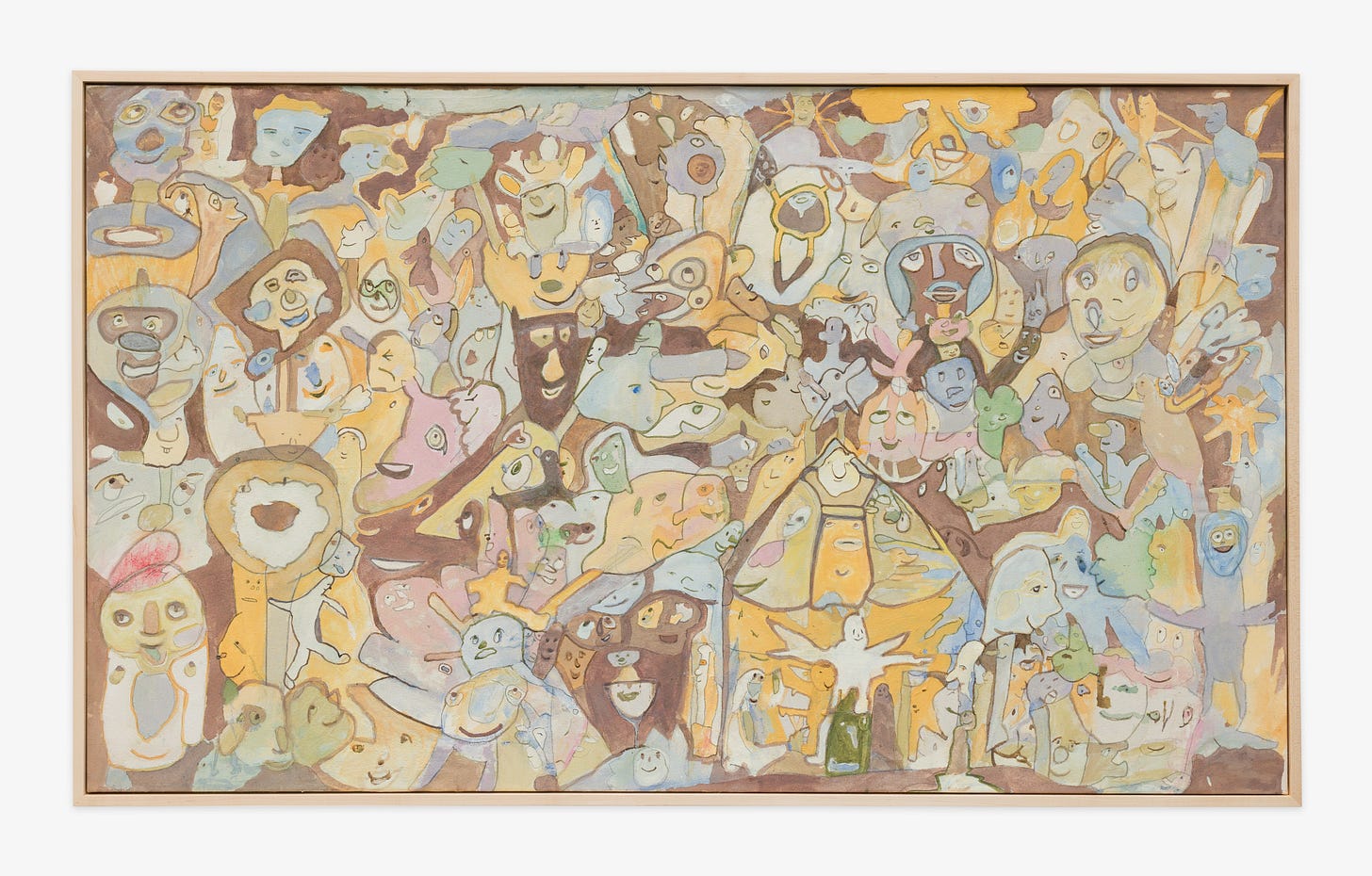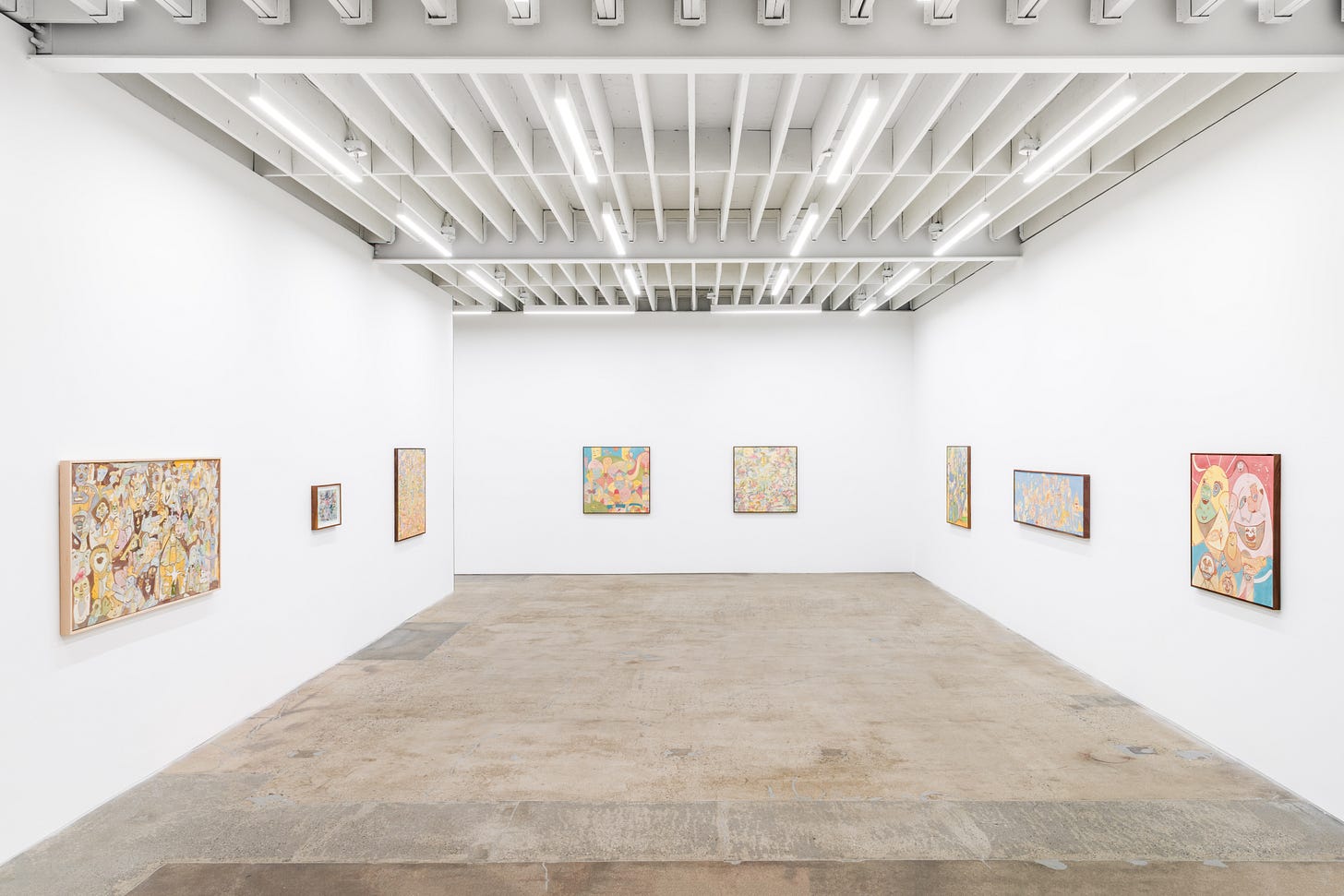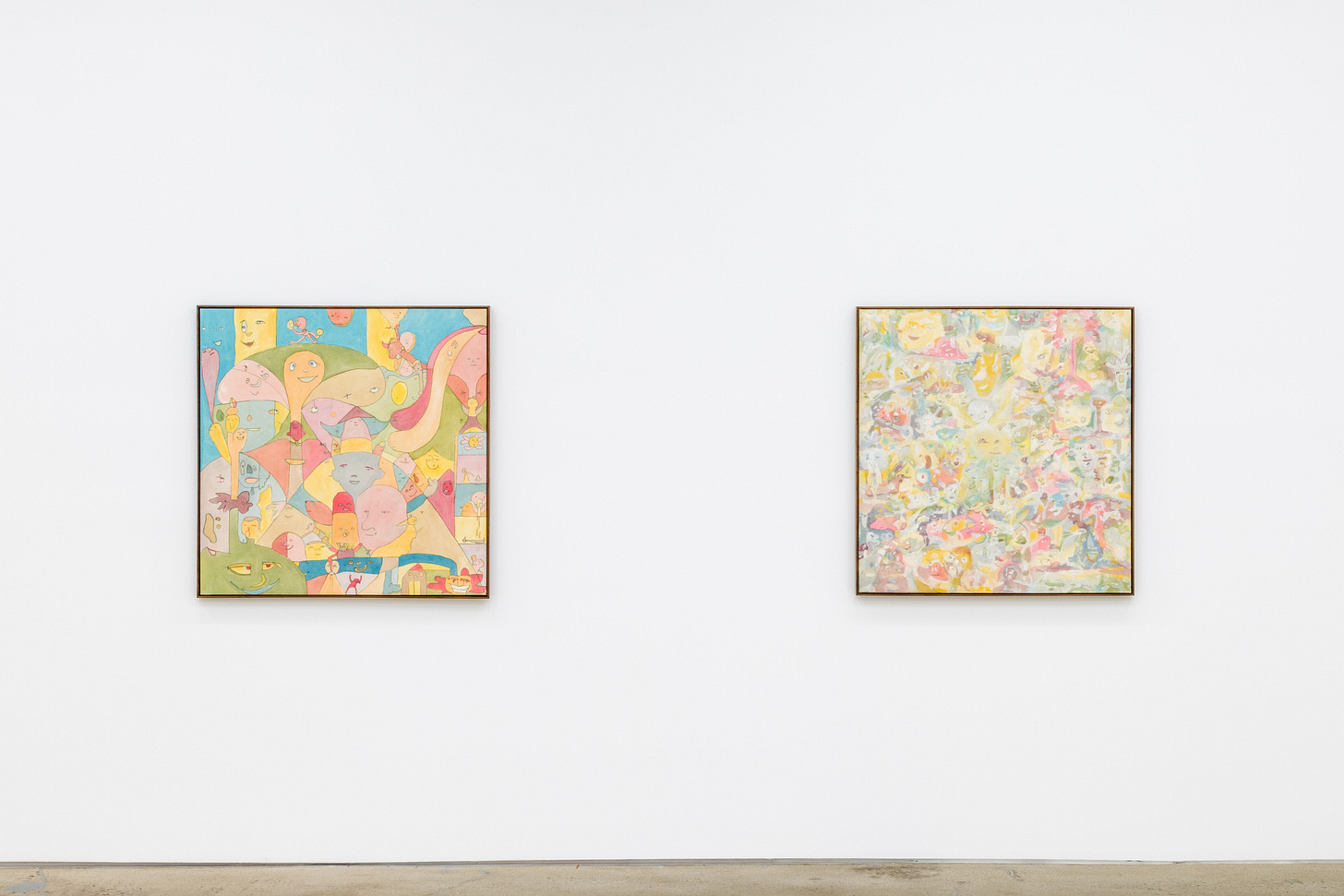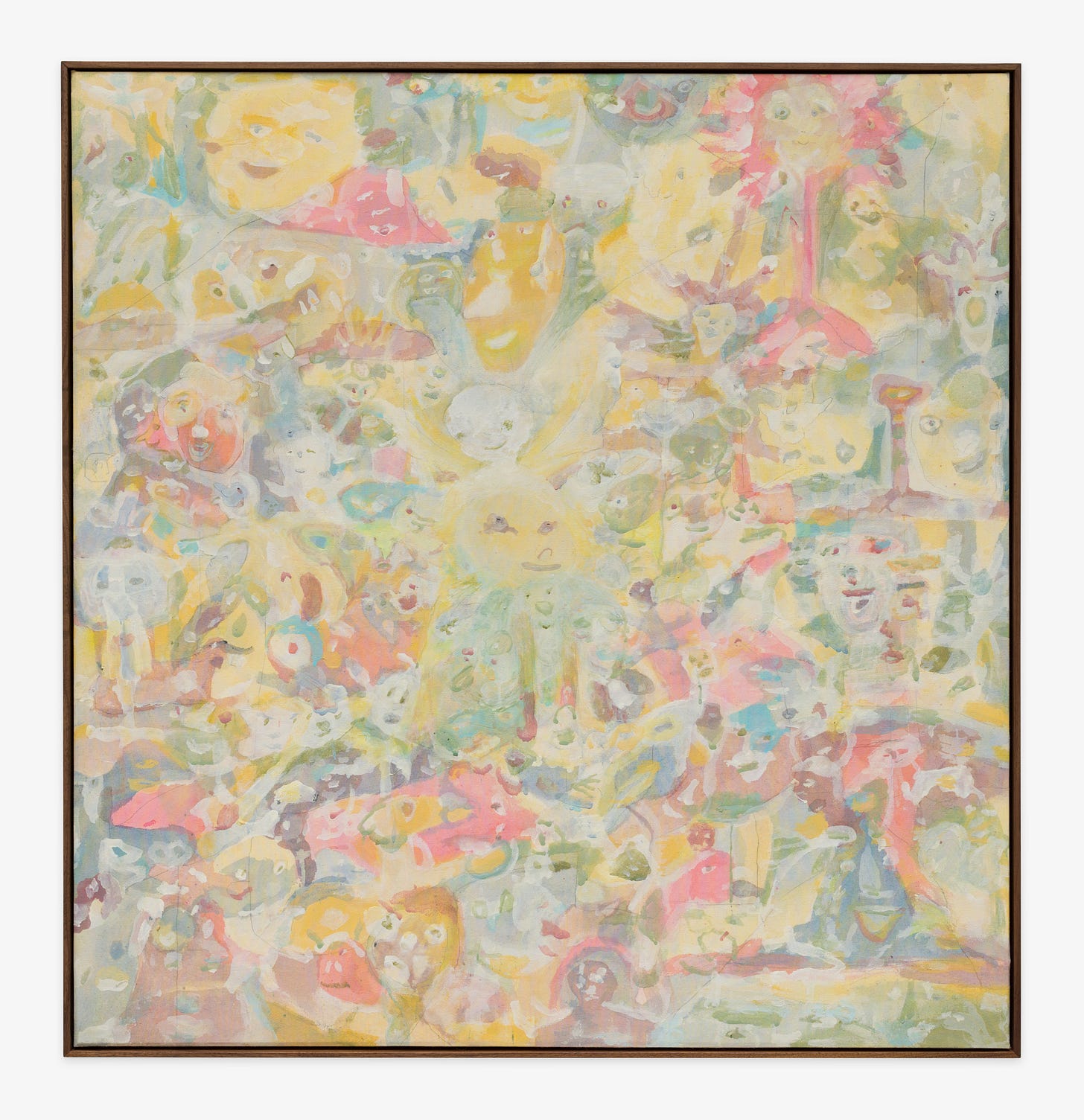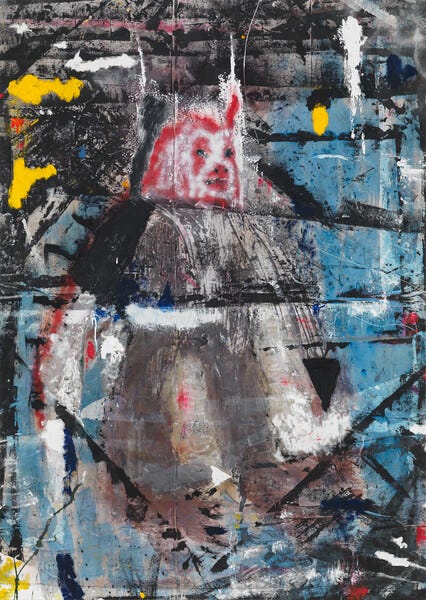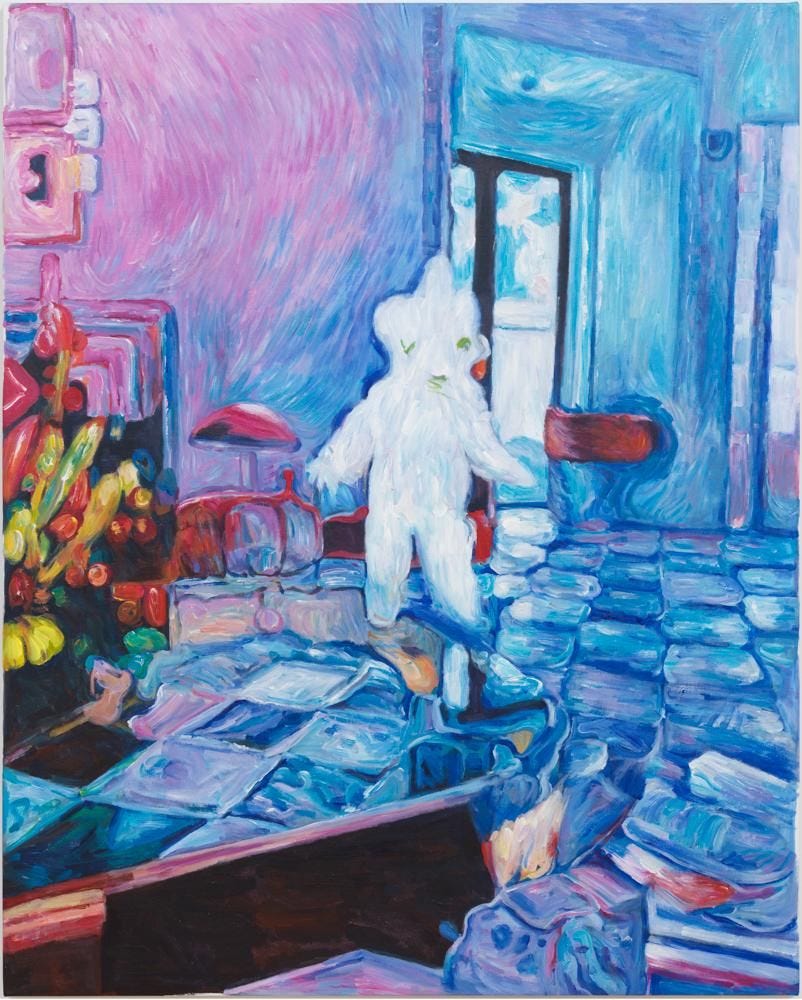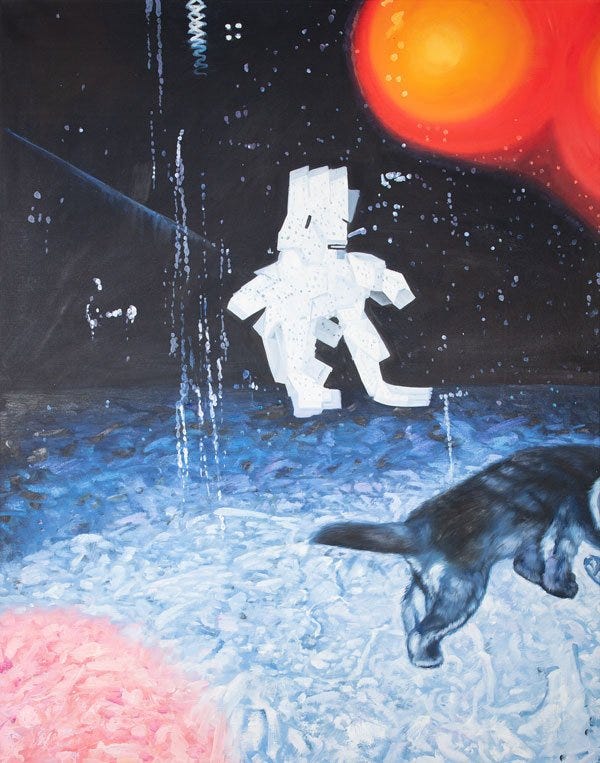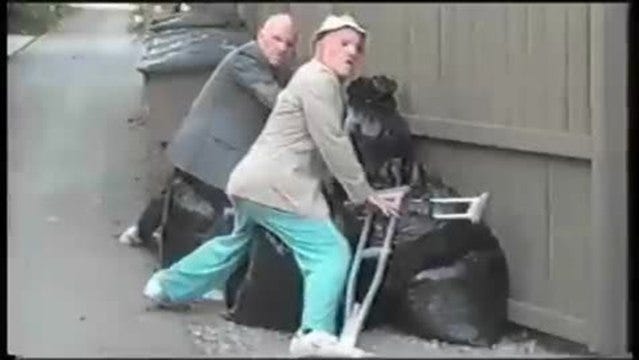Harmony Korine
And new paintings and new music
1
My show, Tales is now up at SHRINE in Los Angeles until August 19th. Here are a few images and the accompanying text by SHRINE. I’ll be performing some new music at the gallery on August 16th from 6-8pm. Come on out.
Ross Simonini is all in with art and life. He uses every possible body part to write, draw and paint. His gestural marks and fields of color are applied with pencils and paint brushes operated by hands, toes, knees and elbows. By using all four limbs when working, the artist’s “hand” is metaphorically, and literally, obscured to produce imagery that allows space for the hidden unconscious to appear.
Simonini’s first step is choosing a simple refrain for each painting. He then begins repeatedly writing this verse hundreds of times, over and over again, onto canvas, muslin, or paper with all parts of his body. The simple phrase comes undone through sheer repetition until its legibility disintegrates completely. Words and language disappear, coalescing into representations of what the artist considers beings.
To add depth and vitality to the beings and their realms, Simonini uses milk paint, an ancient and natural medium used in frescos and created with olive oil, fossilized sea shells, pine resin, flax oil, beeswax, raw pigments and salt. Just as milk animates and sparks our own developing bodies, the milk paint animates and fuels his characters and scenes. In solidarity, and as an act of private performance, the artist sometimes ingests a small amount of milk prior to working in order to bridge the gap between the maker and the work.
All of Simonini’s beings signify and relate to an understanding of the world through animism– a universal concept that every single thing is alive and animated. The confounding narratives that drift into focus in Simonini’s paintings include nature spirits, trees, animals, and water as well as elements of the man-made world: homes, phones, towns, and people. It’s a grand vision, and Simonini sees and feels the life inside everything, even the inanimate objects we take for granted. His artistic vision contains an abundance of being for us to enjoy and dip into; it’s a gift.
Text by SHRINE
2
I am continuing to release a new song on every new moon. The newest is Theme of My Anything featuring the wonderful voice of Fran. Listen below.
3
An interview with Harmony Korine
After writing the screenplay for Kids at nineteen, Harmony Korine appeared on Late Night with David Letterman and spoke about his father’s friendship with the legendary tap dancing duo the Nicholas Brothers. Later, he told Roger Ebert that he had lost touch with his father but had recently spotted him on Canal Street selling turtles. After directing Gummo, a dirty collage of a film about backwater life, he told interviewers that he hoped the film would play in shopping malls, that his next project was an adaptation of Joyce’s Ulysses starring Snoop Dogg (as Leopold Bloom), and that, during the shooting of the film, he had found “a piece of a guy’s shoulder in a pillowcase.”
These anecdotes, whether true or whoppingly fat lies, are a part Harmony Korine’s unified vision. In both his life and work, Korine ignores coherent narrative, good sense, and the line between fiction and truth, all in the pursuit of a purer form of entertainment, an experience untethered to culture or trends. His work is distinctly American in its subject matter, but has almost no relation to American cinema. Two recent films, Julien Donkey-Boy and Mister Lonely, contain some of the most elegant, lush images in memory, and yet Korine’s bleak vision of reality aches persistently at their core. This vision comes to a head in his new un-film, Trash Humpers, a disturbing and raw “home movie” about a gang of criminally insane elderly people who do terrible things to their neighbors (and hump trash). The primary actors were Korine and his wife, Rachel, who slept under bridges for character development. The entire film was edited with a couple of VCRs.
Throughout his life, Korine has created art in a variety of mediums—drawings, paintings, and photographs for art galleries, fanzines with the poet Mark Gonzales, music videos, a fractured experimental novel, cameo roles for mainstream films, and Pass the Bitch Chicken, a collaborative book with the artist Christopher Wool. Much of Korine’s work can be linked to his early “Mistakist” Manifesto, which describes art as an experiment with accident, rather than an expression of self. Like Werner Herzog, a close collaborator and friend, Korine is less interested in clinging to meaning than he is in searching for it, wild and naked, in the worst part of town.
I interviewed Korine on the phone, while he was at home in Tennessee, near the neighborhood where Trash Humpers was filmed. If he was lying about anything, he lied joyously—in search of some pure entertainment. Soon after, we exhibited some work together in Los Angeles. —Ross Simonini
I. “EVERYTHING BECOMES NOISE.”
ROSS SIMONINI: You’ve said that your artistic goal is nonsense. I have a certain idea of what that word means, but I’m wondering what your definition of it is.
HARMONY KORINE: Things that don’t always add up, jokes with no punch lines, or things where there are pages missing in all the right places. Or maybe it’s not nonsense so much as an imperfection, things that have an emotional sense, rather than any kind of laid-out logic or standard set of rules. Things that are awkward. I just never really cared about perfect sense. I like perfect nonsense.
RS: This type of thinking sounds like it’s connected to the Mistakist Manifesto you put out a few years ago.
HK: That’s something I talked about a long time ago, and I still feel strongly about it. For me, the interesting parts of the poetry of art reveal themselves in mistakes, idiosyncrasies, and the interpretation of accidents.
RS: When you put out that manifesto did you want people to follow your lead?
HK: At the time I wrote that I was pretty messed up in the head. I felt certain people would know what I was talking about. I didn’t think it was going to take hold of the country.
RS: There’s this line in the manifesto where you say, “Grammer means more when words are mispelled and used incorrectly in the traditional sense of the word.”
HK: My spelling is terrible and my grammar is terrible, but I never really thought about it until I saw Mark Gonzales’s poems. I saw that his misspellings really added to what he was doing. It means everything and nothing.
RS: Another line says, “A mistakist must believe in God over all else.”
HK: I was just thinking that the real world wasn’t enough, that science isn’t enough, that a true mistake is some kind of magic, or maybe God.
RS: You still think that’s true, that the real world isn’t enough?
HK: Yeah.
RS: It’s just that with Trash Humpers, you’ve said you want it to be “experiential,” which sounds, to me, less like magic—like you’re trying to evoke a feeling of reality.
HK: What I mean by that, when I say magic—there’s a way of looking at things that can allow you to transcend the rules of the real world, or in film terms, the cinema vérité. It’s something that hovers above the boring truth.
RS: Your films do that, I think—look at reality with an absurd lens—but then what do you mean when you say Trash Humpers is supposed to be experiential?
HK: Trash Humpers is difficult to articulate in words, and it was never meant to be something that was easy to explain away. I wanted it to be more like an experience, like something you live through, something that traumatized you—or even a happy experience—something that’s emotional and not something with a narrative. I just never wanted to make things that you talk away. I wanted to make work that was felt. There are things that are more important than words. They go beyond meaning. It’s post-meaning. It’s like a glow that lives inside you.
RS: What about YouTube? How does that fit into this experiential idea?
HK: YouTube and that whole video movement is something I haven’t really figured out yet. I like YouTube a lot. In fact, a lot of times I’m more excited about a thirty-second-long clip than a lot of movies I see. That whole thing’s a seismic shift in consciousness that I’m still trying to figure out. What does it mean to be able to watch anything at any moment? I don’t know how it changes the work. When things are that accessible, when you can watch information all the time, it’s difficult to give anything a sense of value. No one cares about authorship. And maybe that’s a good thing. It just becomes less about the piece and more about the sheer quantity. The risk is that everything becomes noise.
II. MAINSTREAM CURB DANCING
RS: I read that you were thinking of “releasing” Trash Humpers by leaving a VHS tape on the sidewalk rather than distributing it through theaters and DVDs.
HK: You know, I wouldn’t even call Trash Humpers a movie. I don’t know what you’d call it. It was meant to be something like an artifact, something you find buried in a ditch, something that had been unearthed, found in a Ziploc bag, floating in a river somewhere. I thought that, if I was going to stay true to the project, I would probably just stick it in people’s mailboxes, send it to police stations, leave it on doorsteps of mansions, in the projects, under trash cans, under bridges. I would plant them everywhere and see what happened. But I made it and then I didn’t have the patience do that. That’s not to say I won’t do that with something else.
RS: Have you ever seen another film that acted as a found object, a movie that seemed to have no intention?
HK: Home movies are like that. But the thing about home movies is that they lack any kind of drama. There’s a movie that William Eggleston made called Stranded in Canton that maybe comes pretty close to that.
RS: Would you say Trash Humpers was an experiment in the home-movie aesthetic? Or was it a move toward something?
HK: The next thing I do won’t be like this. I don’t really have any kind of allegiance to anything like that—a form or a narrative or a medium. I just enjoy making things, acting on impulse.
RS: Julien Donkey-Boy was filmed according to the DOGME 95 set of rules, right? Would you ever try another DOGME 95 film?
HK: I could say that Trash Humpers was more DOGME-like—just in the sense of what the rules were—than Julien Donkey-Boy, the movie I made that was a DOGME film. In terms of working with those DOGME 95 guys again, I’d be up for it, but it seemed like it was very much of that time, of that moment.
RS: What have you been working on since Trash Humpers? I’ve been seeing your Osama Bin Laden and E.T. drawings around.
HK: I made those a few years ago. I’ve been making artwork, taking photographs, writing again. I just finished a script, which I hope to be shooting in the fall. I started tap dancing again.
RS: Oh yeah, I’ve heard about your love of tap dancing.
HK: I’ve always loved it. When I was young I used to watched Nicholas Brothers films. For my birthday, my dad would always buy me these VHS tapes of old Nicholas Brothers films. Then I had these next-door neighbors. They lived a couple of doors down, actually. "ey were both juvenile delinquents. I think one of them had killed somebody. He was kind of famous in this area because he had killed somebody by running their head over in a car. So, when he was in jail, he had gotten really into tap dancing. But, like, actually tap dancing.
RS: Actual tap dancing.
HK: He had made tap shoes. They let him make tap shoes in jail. So when he came out, he got the neighborhood kids into this kind of scene where they—we’d call it “curb dancing.” He and his brother would go and they’d steal parking-lot curbs—you know, just moveable curbs—and they’d fill their yard up with these curbs, hundreds of them. Then we’d get some tap shoes and we’d take our laces out of our tap shoes and we’d—this was all happening during these sort of weekend barbecues—and we’d do these moves.
RS: Moves...
HK: We’d do these dances in the backyard across these stolen parking-lot curbs. A lot of it had to do with catching your shoes, kicking off your shoes in midair and catching them with your bare feet. But, I mean, when I say it was a scene, it was ten of us. I have photos from that time and I’ve been looking at them and thinking about tap dancing a lot. Both of the brothers are in jail now. I believe one of them is on death row.
RS: So recently you’ve been practicing curb dancing again?
HK: What happened was, a month or two after my daughter was born last year, I was at home and I was really bored, and she had fallen asleep. My mom had given me a box full of clothes that had been mine when I was kid, for the baby, and at the bottom of the box were those tap shoes and I just started messing around with them. I want curb dancing in the mainstream.
RS: Do you have plans for this or are you just ruminating on curb dancing for a bit?
HK: I’d like to do a stage show. I’ve written a monologue about it. It was this guy who looks a lot like the Elephant Man—John Merrick, is that his name?—he delivers this beautiful soliloquy and then does this intricate set of moves, curb dancing moves.
RS: I hope we all get to see that one day.
HK: It’s really meant more for a small theatrical experience, rather than Broadway.
III. “TRASH HUMPERS CELEBRATE EVIL.”
RS: I’ve been reading those collected fanzines you put out.
HK: We actually made those for this family of hunchbacks that lived down the street.
RS: What?
HK: When I first lived in New York there was this family of hunchbacks in a place on Crosby Street. "ey worked at a gas station that was on the corner. So Mark [Gonzales] and I would just make these fanzines to give to them because they always looked like they were in a terrible mood. A lot of that humor was geared toward that hunchback family. Thee Schlöndorffs was their name. They were related to that director, Volker Schlöndorffs, who directed The Tin Drum.
RS: I’ve heard you talk about vaudeville as being a seminal art form for you. Is that still important to you?
HK: Of course. I always love that type of performer. I always love the type of person who can live off their wits, purely by entertaining. I love novelty dances and novelty comics and novelty singers, people who had this very specific ability to entertain and would do anything it took to do so. Child acrobats, people who can set themselves on fire—that’s always what kept me going. Goldfish swallowers, pygmies—to me, that’s the greatest thing in life.
RS: You think that kind of entertainment exists in any modern art forms?
HK: Not really, not really. I don’t really see it that often. I do try to put that type of energy into my films. It’s pure.
RS: Maybe that kind of entertainment can’t be in mainstream bands or Hollywood films. Maybe it has to be relegated to the fringe parts of culture to maintain that sort of intensity.
HK: It’s different now because everybody knows what everyone else is doing. Now, I guess, that type of entertainment is considered socially unacceptable or something. To me, that was the grand age of entertainment— someone who could just slap some face paint and cork on their face and then go out there and sing opera. Someone with one leg who tap-dances and smokes a cigar is just the best.
RS: Andy Kaufman always talked about himself as a song-and-dance man, an entertainer.
HK: Yeah, that’s true, he did.
RS: There’s this quote about Trash Humpers that says it’s “the type of thing that makes you feel bad about the human race,” and...
HK: Oh, I didn’t say that. "at was a journalist. I was really surprised by that quote. I think the trash humpers celebrate evil. They transcend awful. Theey turn horror into an art form. They do terrible things but they do it in a way with total abandon and complete glee. They have poetry in them, those characters. I think those characters care more than normal people, but it’s just that their way of showing it is more fucked up. They are life-affirming. Do you know what I mean? There’s beauty in destruction. It looks great when something burns. Sometimes just the act of blowing shit up is so fulfilling. I see as much merit in destruction as building things.
RS: People always talk about you as someone who doesn’t care about the audience, who ignores and subverts them purposely, but the type of art that you really love is all about entertainment, which means that it’s all about the audience. So you do care, don’t you?
HK: I do care. I don’t see how you could do what I do and not care, or why. I think it would be an awful way to live life, walking through life and not caring. In fact, I think I care more than anyone else. All I ever wanted to do was to entertain.
(published in 2010 in The Believer)
For more, listen to Harmony and I talk about his music on The Organist.


